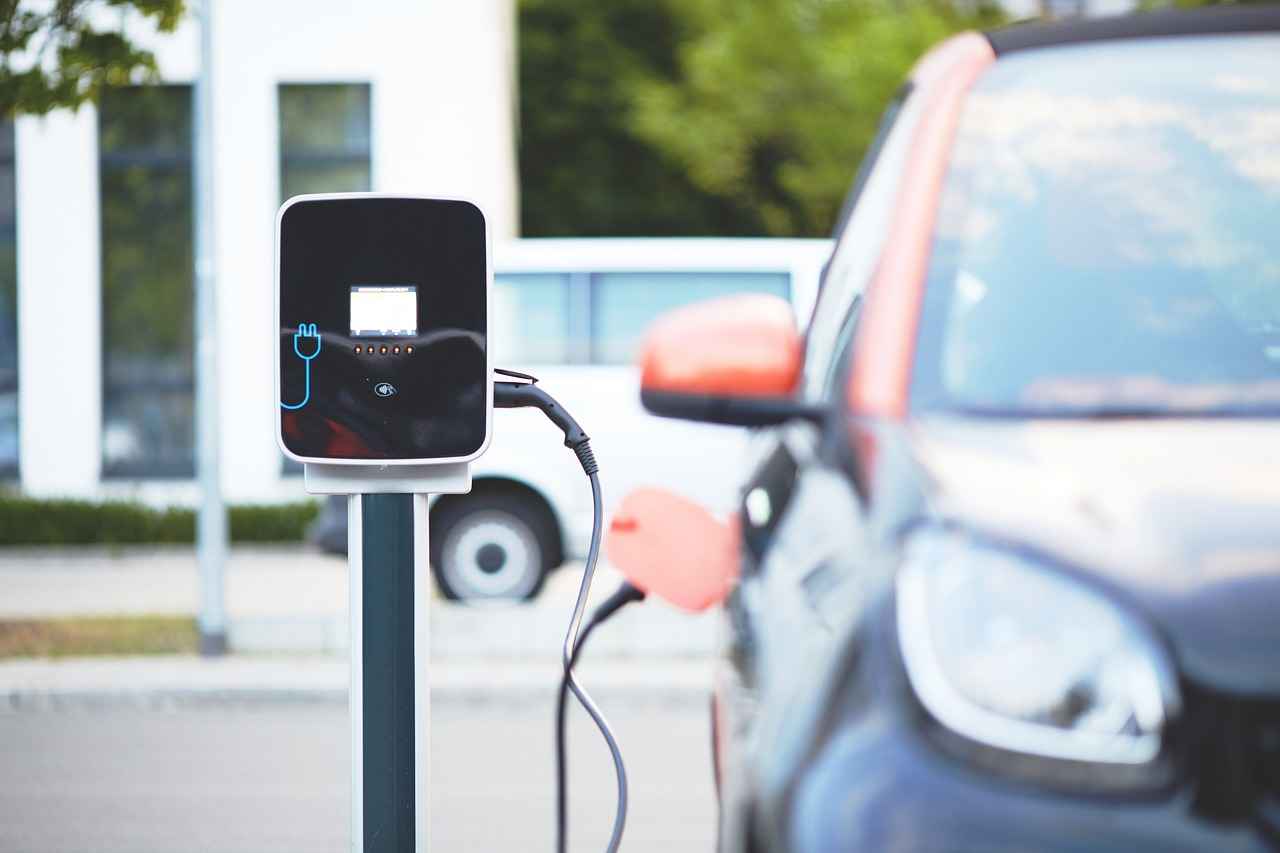This article delves into the most exceptional electric bikes tailored for eco-friendly riders. It highlights their key features, benefits, and the significant role they play in fostering a sustainable lifestyle.
1. Understanding Electric Bikes
Electric bikes, commonly known as e-bikes, seamlessly blend traditional cycling with electric power. They serve as an eco-friendly alternative to conventional modes of transportation, significantly reducing carbon footprints while promoting a healthier lifestyle.
2. Benefits of Riding Electric Bikes
- Reduced Emissions: E-bikes contribute to lower greenhouse gas emissions compared to cars, enhancing air quality.
- Cost Savings: Riders can save on fuel and maintenance costs, making e-bikes a financially savvy choice.
- Health Improvement: They encourage regular physical activity, making cycling accessible to all fitness levels.
3. Key Features to Look For
When selecting an electric bike, consider the following essential features:
- Battery Life: A long-lasting battery is crucial for extended rides.
- Motor Power: Stronger motors provide better assistance, especially on inclines.
- Weight Capacity: Ensure the bike can support your weight along with any additional cargo.
4. Top Electric Bike Brands
Several brands excel in the electric bike market, offering diverse models to suit various riding styles:
- Premium Brands: Companies like Trek and Specialized are renowned for their high-quality components.
- Budget-Friendly Options: Brands such as Ancheer provide reliable e-bikes that won’t break the bank.
5. How to Choose the Right Electric Bike
Choosing the right e-bike involves assessing your riding habits and preferences. Consider factors like:
- Riding Style: Determine whether you’ll be commuting, recreational riding, or tackling off-road trails.
- Test Riding: Always test ride models to gauge comfort and handling before purchasing.
6. Maintenance and Care for Electric Bikes
Proper maintenance is vital for longevity and performance. Key aspects include:
- Battery Maintenance: Follow best practices for charging and storage to extend battery life.
- General Upkeep: Regularly check tire pressure, brakes, and lubrication to ensure smooth operation.
7. Electric Bikes and Sustainability
Electric bikes are not only a practical transportation option but also a sustainable choice that supports a greener planet. Their impact on urban mobility and community health is profound, contributing to cleaner air and reduced noise pollution.
8. Future Trends in Electric Biking
The electric bike industry is rapidly evolving. Innovations in technology and design are enhancing user experience and efficiency. Keeping an eye on these trends will help you make informed decisions.
9. Conclusion: Embracing Electric Biking
In conclusion, electric bikes offer a viable and sustainable transportation option for environmentally conscious riders. By choosing an electric bike, you contribute to a healthier planet while enjoying the numerous benefits of cycling.

1. Understanding Electric Bikes
Understanding Electric Bikes
Electric bikes, commonly referred to as e-bikes, represent a significant advancement in the cycling world by merging traditional cycling with electric power. This innovative approach not only enhances the cycling experience but also offers a sustainable alternative to conventional modes of transportation. E-bikes are equipped with an electric motor that assists with pedaling, making it easier to navigate various terrains and distances.
The design of electric bikes focuses on reducing our carbon footprints, promoting eco-friendly commuting, and encouraging healthier lifestyles. With the increasing concern over climate change and urban pollution, e-bikes serve as an effective solution to minimize environmental impact. They allow riders to travel without contributing significantly to greenhouse gas emissions, making them a preferred choice for the environmentally conscious.
Benefits of Electric Bikes
- Reduced Emissions: E-bikes produce significantly lower emissions compared to traditional vehicles, contributing to cleaner air and a healthier environment.
- Cost-Effective: With rising fuel prices, e-bikes provide a cost-effective alternative, reducing expenses related to fuel and maintenance.
- Health Benefits: Riding an e-bike promotes physical activity, allowing riders to enjoy the benefits of cycling while having the option of electric assistance.
In addition to their environmental benefits, e-bikes also enhance accessibility for a broader audience. Riders of all fitness levels can enjoy cycling without the intimidation of steep hills or long distances. This inclusivity encourages more people to adopt cycling as a primary means of transportation.
As technology continues to evolve, electric bikes are becoming more efficient and user-friendly, making them an attractive option for those looking to incorporate more sustainable practices into their daily lives. With their combination of convenience, health benefits, and environmental impact, e-bikes are paving the way for a greener future.

2. Benefits of Riding Electric Bikes
Riding electric bikes has become a popular choice for many individuals seeking a more sustainable and enjoyable mode of transportation. The benefits of using electric bikes extend beyond mere convenience; they encompass significant environmental, financial, and health advantages that contribute to a more sustainable lifestyle.
- Reduced Emissions: Electric bikes produce zero tailpipe emissions, making them a cleaner alternative to traditional gasoline-powered vehicles. By choosing to ride an e-bike, you are actively participating in reducing air pollution and combating climate change.
- Cost Savings: With rising fuel prices, electric bikes offer an economical solution. The cost of electricity to charge an e-bike is significantly lower than the cost of gasoline, allowing riders to save money in the long run.
- Improved Physical Health: Riding an electric bike encourages physical activity. While e-bikes provide pedal assistance, riders still engage in exercise, which can lead to improved cardiovascular health and overall fitness.
- Convenience and Accessibility: E-bikes make cycling accessible to a broader audience, including those who may find traditional biking challenging due to physical limitations or age. This inclusivity allows more people to enjoy the benefits of cycling.
- Enhanced Commuting Experience: Electric bikes can help avoid traffic congestion and reduce commuting times. They offer a practical solution for urban commuting, allowing riders to navigate through busy streets effortlessly.
In summary, the advantages of riding electric bikes are numerous and impactful. By opting for an e-bike, individuals not only contribute to a healthier planet but also enhance their personal well-being and financial savings.
2.1 Environmental Impact
Environmental Impact of Electric Bikes
Electric bikes, commonly known as e-bikes, are revolutionizing the way we think about transportation and its impact on the environment. One of the most significant advantages of e-bikes is their ability to substantially reduce greenhouse gas emissions when compared to traditional gasoline-powered vehicles. This reduction is crucial in the fight against climate change and pollution.
According to recent studies, e-bikes produce up to 90% fewer emissions than cars. This is primarily due to their reliance on electricity rather than fossil fuels. As cities continue to grapple with air quality issues, the adoption of electric bikes presents a viable solution to enhance urban living conditions.
Moreover, electric bikes contribute to cleaner air by decreasing the number of cars on the road. With fewer vehicles, there is a noticeable decline in traffic congestion, which not only improves air quality but also makes cities more livable. The reduction in noise pollution further enhances the urban environment, creating a more pleasant atmosphere for residents.
Another critical aspect of e-bikes is their energy efficiency. They consume significantly less energy per mile compared to cars, making them an eco-friendly alternative for daily commuting. This efficiency not only lessens the demand for fossil fuels but also encourages a shift towards renewable energy sources as more people opt for electric transport.
In conclusion, the environmental impact of electric bikes is profound. By choosing to ride an e-bike, individuals not only contribute to a healthier planet but also promote sustainable urban development. Embracing this mode of transportation is a step towards a greener future for all.
2.1.1 Carbon Footprint Comparison
In today’s world, where environmental concerns are at the forefront, understanding the impact of our transportation choices is crucial. When we compare the carbon footprint of electric bikes to traditional vehicles, the results are striking. Electric bikes (e-bikes) showcase a significant reduction in greenhouse gas emissions, highlighting their potential as a green alternative to conventional modes of transport.
To illustrate this point, consider the following data:
| Vehicle Type | Average CO2 Emissions per Mile |
|---|---|
| Traditional Car | 404 grams |
| Electric Bike | 10 grams |
The table above clearly shows that traditional cars emit approximately 40 times more CO2 per mile than electric bikes. This drastic difference underscores the role e-bikes can play in reducing our overall carbon footprint.
Moreover, electric bikes are not just about lowering emissions; they also promote a sustainable lifestyle. By choosing an e-bike for short commutes or errands, riders contribute to decreased traffic congestion and improved air quality in urban areas. This shift not only benefits the environment but also enhances the quality of life for communities.
In conclusion, the carbon footprint comparison between electric bikes and traditional vehicles reveals a clear advantage for e-bikes. As more individuals recognize this benefit, the adoption of electric bikes is likely to increase, paving the way for a more sustainable future.
2.1.2 Energy Efficiency
Energy Efficiency of Electric Bikes is a crucial factor in their appeal as an alternative to traditional vehicles. Electric bikes, or e-bikes, are designed to provide a more sustainable mode of transportation while significantly reducing energy consumption.
One of the most compelling advantages of electric bikes is their remarkable energy efficiency. Studies indicate that e-bikes consume considerably less energy per mile compared to cars. For instance, while a standard car may use approximately 0.3 to 0.5 kWh of energy to travel a mile, an electric bike typically requires only about 0.1 kWh. This stark difference highlights how e-bikes can contribute to a decreased reliance on fossil fuels and promote a cleaner environment.
- Reduced Carbon Footprint: The lower energy consumption of e-bikes translates directly into fewer greenhouse gas emissions. This reduction is vital in combating climate change and improving air quality in urban areas.
- Cost-Effectiveness: Not only are electric bikes more energy-efficient, but they also offer significant savings on fuel costs. Riders can save money on gas and reduce their overall transportation expenses.
- Health Benefits: By opting for an electric bike, individuals can incorporate more physical activity into their daily routines, leading to improved health outcomes.
In addition to their energy efficiency, electric bikes also promote a sustainable lifestyle. As cities become more congested, e-bikes provide a practical solution to urban mobility challenges, reducing traffic and noise pollution. Furthermore, they encourage a shift away from dependence on fossil fuels, making them an integral part of the transition to greener transportation options.
In conclusion, the energy efficiency of electric bikes is a significant factor that supports their growing popularity among environmentally conscious riders. By choosing e-bikes, individuals not only contribute to a more sustainable future but also enjoy the numerous benefits associated with cycling.
2.2 Health Benefits
Health Benefits of Riding Electric Bikes
Riding electric bikes, commonly known as e-bikes, provides a multitude of health benefits that cater to individuals of all fitness levels. Unlike traditional bicycles, e-bikes offer the advantage of pedal assistance, making cycling more accessible and enjoyable for everyone, including those who may be new to exercise or have physical limitations.
- Improved Cardiovascular Health: Regularly riding an e-bike can enhance heart health by increasing your heart rate and improving circulation. This type of exercise is beneficial for reducing the risk of heart disease and hypertension.
- Weight Management: Engaging in regular cycling can aid in weight loss or maintenance. E-bikes allow users to adjust the level of assistance, enabling them to customize their workout intensity based on their fitness goals.
- Joint-Friendly Exercise: Cycling is a low-impact activity, which means it is easier on the joints compared to running or other high-impact exercises. This makes e-bikes a great option for those with joint issues or recovering from injuries.
- Mental Well-being: Exercise, including cycling, releases endorphins, which can improve mood and reduce feelings of stress and anxiety. Riding an e-bike can also provide a sense of freedom and adventure, contributing positively to mental health.
- Social Interaction: E-biking can be a social activity, allowing friends and family to ride together. This social aspect can enhance motivation and make exercise more enjoyable.
In essence, riding electric bikes not only promotes physical fitness but also encourages a healthier lifestyle. The ability to pedal with assistance makes this form of exercise accessible to all, fostering a community of riders who prioritize their health and well-being. By integrating e-bikes into your routine, you can cultivate a sustainable approach to fitness that benefits both the body and mind.

3. Key Features to Look For
Key Features to Consider When Choosing an Electric Bike
When it comes to selecting the perfect electric bike, understanding the key features is crucial to ensure it meets your specific needs and preferences. Here, we will delve into some of the most important aspects to consider, making your decision-making process easier and more informed.
- Battery Life: The battery life of an electric bike determines how far you can travel on a single charge. Look for models boasting a long-lasting battery, ideally over 40 miles per charge, to maximize your riding experience.
- Motor Power: The motor’s power significantly affects the bike’s performance, especially on inclines. A motor with at least 250W is recommended for urban commuting, providing sufficient assistance for a smooth ride.
- Frame Style: The frame style impacts both comfort and handling. Consider whether you prefer a traditional diamond frame, a step-through design for easy mounting, or a folding frame for portability.
- Weight Capacity: Each electric bike has a maximum weight limit. Ensure the bike can comfortably support your weight along with any additional cargo for a safe and enjoyable ride.
- Braking System: Look for reliable braking systems, such as hydraulic disc brakes, which offer superior stopping power, especially in wet conditions.
- Suspension: If you plan to ride on rough terrain, consider a bike with front or full suspension to absorb shocks and provide a smoother ride.
By paying attention to these key features, you can select an electric bike that not only fits your lifestyle but also enhances your overall riding experience. Whether you’re commuting, exploring, or enjoying leisure rides, the right electric bike will make a significant difference.
3.1 Battery Life
Battery Life: The Key to Your Electric Bike Experience
The battery life of an electric bike is a critical factor that directly influences how far you can travel on a single charge. For riders seeking to maximize their experience, understanding the nuances of battery technology is essential.
When evaluating electric bikes, consider the following aspects regarding battery life:
- Capacity: Measured in amp-hours (Ah), a higher capacity typically means a longer ride. Look for batteries with at least 500Wh for extended journeys.
- Range: This refers to the distance an electric bike can travel on a single charge. Models can vary significantly, with some offering up to 100 miles, depending on terrain and rider input.
- Charging Time: Fast charging capabilities can be a game-changer. Many modern e-bikes can be fully charged in 4-6 hours, allowing for quick turnarounds between rides.
Additionally, the type of battery plays a role in performance:
| Battery Type | Advantages | Disadvantages |
|---|---|---|
| Lithium-ion | Lightweight, high energy density, long lifespan | More expensive |
| Lead-acid | Cost-effective, widely available | Heavier, shorter lifespan |
To enhance battery longevity, consider the following tips:
- Regular Charging: Keep your battery charged between 20% and 80% to prolong its life.
- Storage Conditions: Store your bike in a cool, dry place to prevent battery degradation.
- Avoid Deep Discharging: Frequently letting your battery drop to 0% can shorten its lifespan.
In conclusion, selecting an electric bike with a reliable and long-lasting battery is crucial for an enjoyable riding experience. By understanding battery specifications and maintenance, you can ensure that your electric bike serves you well for years to come.
3.2 Motor Power
Motor Power is a crucial aspect of electric bikes that significantly influences their overall performance, especially when navigating inclines and challenging terrains. A bike equipped with a more powerful motor can deliver enhanced assistance, allowing riders to tackle steep hills with ease. This increased power not only makes the ride smoother but also enhances the overall enjoyment of cycling.
When considering motor power, it’s essential to understand the different classifications typically found in electric bikes. Motors are usually rated in watts, with common ranges from 250W to 750W. A motor in the higher wattage range provides greater torque, which is particularly beneficial for riders who frequently encounter hilly landscapes or wish to maintain higher speeds over long distances.
In addition to the wattage, the type of motor plays a significant role in performance. There are primarily three types of motors used in electric bikes:
- Hub Motors: Located in the wheel hub, these motors are easy to install and maintain, offering a quiet ride. However, they may struggle on steep inclines compared to mid-drive motors.
- Mid-Drive Motors: Positioned at the bike’s crank, these motors provide better weight distribution and efficiency, making them ideal for climbing steep hills.
- Geared Motors: These motors offer a balance of power and efficiency, making them suitable for varied terrains.
Ultimately, the choice of motor power should align with your specific riding needs. Whether you are commuting through urban landscapes or embarking on adventurous trails, selecting the right motor can transform your cycling experience. A powerful motor not only aids in overcoming physical challenges but also encourages a more sustainable lifestyle by making cycling a viable alternative to traditional transportation.
In conclusion, understanding motor power and its implications on performance is essential for any prospective electric bike rider. By prioritizing a bike with a suitable motor, you can enjoy smoother rides, tackle diverse terrains, and embrace a more eco-friendly lifestyle.

4. Top Electric Bike Brands
When it comes to choosing an electric bike, understanding the various brands available is essential. Each brand offers distinct features, styles, and price points, catering to different rider preferences. Below, we explore some of the top electric bike brands that stand out in the market.
- Trek: Renowned for its innovation, Trek offers a range of high-performance electric bikes suitable for both casual riders and serious cyclists. Their models often feature advanced technology, ensuring durability and efficiency.
- Specialized: Another premium brand, Specialized focuses on creating electric bikes that enhance the riding experience. Their models are designed with comfort and performance in mind, making them ideal for various terrains.
- Rad Power Bikes: Known for their affordability and reliability, Rad Power Bikes provides a range of electric bikes that cater to urban commuters and adventure seekers alike. Their bikes are user-friendly and come with powerful motors.
- Ancheer: For budget-conscious riders, Ancheer offers a selection of electric bikes that deliver great value without sacrificing quality. Their models are perfect for those new to electric biking.
- Giant: As one of the largest bike manufacturers globally, Giant produces a variety of electric bikes, from mountain to city bikes. Their commitment to quality and performance makes them a popular choice among cyclists.
Each of these brands specializes in electric bikes that cater to diverse riding styles and preferences. Researching these brands will help you find the perfect fit for your cycling needs, whether you are commuting, exploring trails, or enjoying leisurely rides.
| Brand | Key Features | Price Range |
|---|---|---|
| Trek | High-performance, innovative technology | $$$ |
| Specialized | Comfort-focused, versatile designs | $$$ |
| Rad Power Bikes | Affordable, user-friendly | $$ |
| Ancheer | Budget-friendly, reliable | $ |
| Giant | Diverse range, quality assurance | $$$ |
In conclusion, the electric bike market is filled with options that cater to various needs and budgets. By exploring the offerings of these top brands, you can make an informed decision that aligns with your riding style and environmental values.
4.1 Premium Brands
Premium Brands in Electric Bikes are synonymous with quality, performance, and cutting-edge technology. These brands invest heavily in research and development to create bicycles that not only meet but exceed the expectations of riders. When choosing an electric bike, it’s essential to consider the brand’s reputation for durability and innovation.
Brands like Trek and Specialized have established themselves as leaders in the electric bike market. Their commitment to using high-quality components ensures that their bikes are built to last. For instance, Trek’s electric bikes often feature advanced battery technology that allows for longer rides without compromising power. Similarly, Specialized is known for its innovative designs that enhance rider comfort and performance, making them a favorite among cycling enthusiasts.
Additionally, these premium brands often provide extensive warranties and customer support, reflecting their confidence in the longevity of their products. This level of service is crucial for riders who want peace of mind with their investment.
| Brand | Key Features | Notable Models |
|---|---|---|
| Trek | High-quality components, advanced battery technology | Domane+ LT, Super Commuter+ |
| Specialized | Innovative designs, excellent rider comfort | Turbo Vado, Turbo Como |
In conclusion, selecting a bike from a premium brand like Trek or Specialized guarantees access to the latest technology and superior craftsmanship. Riders can enjoy a more reliable and enjoyable experience, making these brands a worthwhile investment for anyone serious about electric biking.
4.2 Budget-Friendly Options
Budget-Friendly Electric Bikes: Affordable Options for Eco-Conscious Riders
For those seeking an economical way to embrace the electric biking trend, there are numerous reliable and affordable options available. With the rise in popularity of electric bikes, brands such as Ancheer and Merax have emerged as leaders in providing great value without compromising on quality.
These brands offer a variety of models that cater to different riding styles and preferences, ensuring that budget-conscious consumers can find something that meets their needs. Below are some key features and considerations when exploring budget-friendly electric bikes:
- Affordability: Many models from Ancheer and Merax are priced competitively, often under $1,000, making them accessible to a wider audience.
- Quality Components: Despite their lower price point, these bikes are equipped with durable frames, reliable batteries, and decent motors that provide a satisfactory riding experience.
- Ease of Use: Most budget-friendly electric bikes are designed for easy assembly and straightforward operation, making them ideal for beginners.
- Versatility: Models from these brands often include features suitable for various terrains, whether it’s commuting through city streets or enjoying leisurely rides on bike paths.
When considering a budget-friendly electric bike, it’s important to look for models that offer a balance of performance and price. Additionally, checking user reviews and expert opinions can help ensure that you choose a bike that meets your expectations.
Ultimately, investing in a budget-friendly electric bike is not only a smart financial decision but also a step towards a more sustainable lifestyle. By opting for an electric bike, you contribute to reducing emissions while enjoying the benefits of cycling.

5. How to Choose the Right Electric Bike
Choosing the right electric bike can be a daunting task, especially with the plethora of options available in the market today. However, understanding your unique needs and preferences is crucial in making an informed decision. This guide will help you navigate the essential factors to consider when selecting an electric bike.
- Assess Your Riding Habits: Before diving into the specifics, reflect on how you plan to use your electric bike. Are you looking for a commuter bike for daily use, a recreational bike for weekend rides, or an off-road model for adventurous trails? Identifying your primary riding style will significantly narrow down your options.
- Consider the Terrain: The type of terrain you’ll be riding on is another critical factor. If you live in a hilly area, a bike with a powerful motor and good battery life is essential. Conversely, flat city roads may allow for a lighter bike with less motor power.
- Evaluate Comfort and Fit: Comfort is paramount for a satisfying ride. When trying out different models, pay attention to the bike’s frame geometry, seat comfort, and handlebar height. A proper fit will enhance your riding experience and encourage longer rides.
- Battery Life and Range: The battery is the heart of any electric bike. Look for models that offer sufficient range for your needs. If you plan on longer rides, opt for bikes with larger batteries that can support extended travel without frequent recharging.
- Motor Power: The motor’s wattage plays a significant role in performance. Higher wattage typically means better assistance on inclines and during acceleration. Consider your local landscape when selecting the appropriate motor power.
- Budget Considerations: Finally, set a budget that reflects your needs and expectations. Electric bikes come in a wide range of prices, and while it’s essential to find something affordable, investing in quality can lead to a better long-term experience.
By taking the time to evaluate these factors, you can make a more informed choice that aligns with your riding habits and personal preferences. This thoughtful approach will lead to a more satisfying purchase and a rewarding riding experience.
5.1 Assessing Riding Style
Assessing your riding style is a crucial step in selecting the perfect electric bike for your needs. Understanding whether you will be using your bike for commuting, recreational riding, or off-road adventures can significantly influence your choice. Each of these riding styles has unique requirements that can help narrow down the best electric bike options available.
For those who primarily commute, a bike that offers efficiency and comfort is essential. Look for models with features such as integrated lights, fenders, and a comfortable seat, as these will enhance your daily travel experience. Additionally, consider a bike with a lightweight frame and good battery life to ensure a smooth ride through urban environments.
On the other hand, if you enjoy recreational riding, you might prioritize a bike that offers a balance of performance and style. Features like a powerful motor for hills, a comfortable riding position, and the ability to customize your bike with accessories can greatly enhance your leisurely rides. Look for options that allow you to switch between different levels of pedal assistance to match your energy and terrain.
For off-road enthusiasts, durability and versatility are key. A robust frame, quality suspension, and knobby tires are essential for tackling rugged trails and uneven surfaces. Additionally, consider the bike’s battery capacity, as longer rides in remote areas may necessitate a bike that can cover more distance without needing a recharge.
Ultimately, understanding your riding style will not only help you choose the right electric bike but also enhance your overall cycling experience. By aligning your bike choice with your specific needs, you can enjoy the benefits of electric biking while ensuring that your investment serves you well for years to come.
5.2 Test Riding
Before making a significant investment in an electric bike, it is highly recommended to test ride various models. This hands-on experience is invaluable as it allows potential buyers to gain firsthand insights into the bike’s comfort, handling, and overall fit. With different brands and models available, each electric bike has its unique characteristics that can significantly affect your riding experience.
When you test ride, pay attention to:
- Comfort: Ensure that the bike feels good when you sit on it. Check the seat height and the handlebar position to see if they suit your body type.
- Handling: Observe how the bike responds to turns and maneuvers. A well-balanced bike should feel stable and easy to control.
- Fit: Make sure that the bike is the right size for you. A proper fit is crucial for both comfort and performance during rides.
Additionally, consider the following tips during your test rides:
- Ride in Various Conditions: If possible, test the bike on different terrains, such as hills, flat roads, and rough surfaces, to assess its performance.
- Evaluate the Motor Assistance: Pay attention to how the motor assists you while pedaling. Different models offer varying levels of support, which can impact your overall experience.
- Ask Questions: Don’t hesitate to ask the dealer about specific features, warranties, and maintenance options. Knowledgeable staff can provide insights that may help in your decision-making process.
In conclusion, taking the time to test ride multiple electric bike models is crucial. It not only helps you find the perfect match for your needs but also enhances your overall riding experience. By evaluating comfort, handling, and fit, you can make a more informed purchase that aligns with your cycling goals.

6. Maintenance and Care for Electric Bikes
Proper maintenance is essential for the longevity and peak performance of your electric bike. Regular checks and care can prevent potential issues, ensuring a smooth and enjoyable riding experience. Here are some key aspects to consider for maintaining your electric bike:
- Battery Maintenance: The battery is the heart of your electric bike. To maximize its lifespan, follow these tips:
- Charge your battery according to the manufacturer’s guidelines, avoiding complete discharges.
- Store the battery in a cool, dry place, especially during extreme temperatures.
- Regularly check for any signs of wear or damage.
- General Upkeep: Routine maintenance is vital for keeping your bike in top shape. Consider the following:
- Check tire pressure regularly; properly inflated tires enhance performance and safety.
- Inspect brakes for responsiveness and wear; adjust or replace as necessary.
- Lubricate the chain to ensure smooth gear shifts and reduce wear.
- Cleaning: Keeping your electric bike clean not only improves its appearance but also its functionality:
- Wipe down the frame and components with a damp cloth after each ride.
- Use a gentle bike cleaner to remove dirt and grime, avoiding high-pressure water that may damage electrical components.
- Regular Inspections: Schedule routine check-ups to identify and address any potential issues early:
- Consider taking your bike to a professional for a comprehensive inspection at least once a year.
- Monitor performance changes; any significant drop may indicate a need for maintenance.
By prioritizing these maintenance practices, you can enhance the performance and lifespan of your electric bike, ensuring a reliable and enjoyable ride every time.
6.1 Battery Maintenance
Battery Maintenance is a crucial aspect of owning an electric bike, as it directly impacts the bike’s performance and longevity. Proper care and attention to your bike’s battery can significantly enhance your riding experience and ensure that your investment lasts for many years.
To begin with, charging practices play a vital role in battery maintenance. It is recommended to charge your battery after every ride, especially if you have used a significant portion of its capacity. However, avoid letting the battery completely deplete before charging, as this can lead to decreased battery life over time. Instead, try to keep the battery charge between 20% and 80% for optimal health.
Furthermore, it’s essential to use the manufacturer’s charger to avoid any compatibility issues that could damage the battery. Always ensure that the charger is in good condition and that the connection points are clean and free from debris.
When it comes to storage, the environment plays a critical role. Store your electric bike in a cool, dry place, away from direct sunlight and extreme temperatures. Ideally, the storage temperature should be between 32°F and 68°F (0°C to 20°C). If you plan to store your bike for an extended period, it is advisable to charge the battery to about 50% before storage and to check the charge level every few months.
Additionally, regularly inspecting the battery for any signs of damage or wear is essential. Look for cracks, swelling, or corrosion on the terminals. If you notice any of these issues, consult a professional for advice. Keeping your battery clean and ensuring that the terminals are free from corrosion will also help maintain its efficiency.
In conclusion, taking care of your bike’s battery through proper charging practices and storage techniques is essential for maximizing its lifespan and performance. By following these guidelines, you can enjoy a reliable and efficient electric biking experience.
6.2 General Upkeep
To ensure your electric bike remains in optimal condition, regular maintenance is essential. This not only enhances performance but also extends the lifespan of your bike. Here are key aspects of general upkeep that every electric bike owner should prioritize:
- Tire Inflation: Maintaining the correct tire pressure is crucial for safety and efficiency. Under-inflated tires can lead to increased rolling resistance, reducing battery life and performance. Regularly check your tire pressure and inflate them according to the manufacturer’s specifications.
- Brake Adjustments: Properly functioning brakes are vital for safety. Regularly inspect your brake pads for wear and ensure they are aligned correctly. Adjust the brake cables as needed to maintain optimal braking performance.
- Chain Lubrication: A well-lubricated chain ensures smooth gear shifts and reduces wear on your bike’s drivetrain. Use a suitable bike chain lubricant and apply it regularly, especially after riding in wet or muddy conditions.
- Battery Care: The battery is the heart of your electric bike. Follow the manufacturer’s guidelines for charging and storing your battery. Avoid letting it completely discharge and store it in a cool, dry place when not in use.
- Regular Cleaning: Keeping your bike clean not only makes it look good but also helps prevent rust and corrosion. Use mild soap and water to clean the frame, wheels, and components. Avoid using high-pressure water, which can damage electrical components.
By incorporating these maintenance practices into your routine, you can enjoy a smoother, safer, and more efficient ride on your electric bike. Remember, a little care goes a long way in preserving your investment and enhancing your cycling experience.

7. Electric Bikes and Sustainability
Electric bikes are revolutionizing the way we think about transportation and sustainability. As urban areas become increasingly congested and pollution levels rise, the adoption of electric bikes stands out as a practical and eco-friendly solution. Not only do they provide an efficient means of travel, but they also play a crucial role in fostering a greener planet.
In this section, we will delve into the significant ways in which electric bikes contribute to sustainability and their impact on urban environments.
- Reduction of Urban Pollution: Electric bikes produce zero tailpipe emissions, making them a cleaner alternative to traditional vehicles. By choosing to ride an e-bike, individuals can significantly decrease the amount of harmful pollutants released into the air, which is vital for improving urban air quality.
- Energy Efficiency: E-bikes are remarkably energy-efficient, consuming less power per mile compared to cars. This efficiency not only reduces the overall energy demand but also lessens the reliance on fossil fuels, contributing to a more sustainable energy landscape.
- Encouragement of Active Lifestyles: Riding electric bikes promotes physical activity, which is essential for public health. With the assistance of an electric motor, people of all fitness levels can enjoy cycling, leading to healthier communities and reduced healthcare costs.
Moreover, as more people embrace electric biking, cities can expect a decrease in traffic congestion. This shift not only enhances mobility but also leads to a more pleasant urban experience, with less noise and a more vibrant atmosphere.
In conclusion, electric bikes are not merely a mode of transportation; they are a sustainable choice that supports a healthier planet. By integrating e-bikes into our daily lives, we can collectively work towards reducing urban pollution and promoting a more sustainable future.
7.1 Urban Mobility Solutions
Urban Mobility Solutions have become a critical focus for cities worldwide, especially as urban populations continue to grow. With increasing traffic congestion and environmental concerns, the need for sustainable transportation alternatives is more pressing than ever. One such solution is the use of electric bikes (e-bikes), which offer numerous advantages over traditional vehicles.
Electric bikes provide an efficient alternative to cars in urban settings. They are designed to navigate through crowded streets effortlessly, making them ideal for commuting. By opting for an e-bike, riders can significantly contribute to reducing traffic congestion. Unlike cars, which occupy more space and require extensive parking, e-bikes can be parked in smaller areas, freeing up valuable city space.
Furthermore, e-bikes promote cleaner air quality in cities. They operate on electric power, producing zero emissions during use. This is particularly beneficial in urban areas where air pollution is a growing concern. By replacing car trips with e-bike rides, individuals can collectively lower the number of harmful pollutants released into the atmosphere, leading to a healthier environment for all residents.
In addition to their environmental benefits, electric bikes also encourage a more active lifestyle. Riders can enjoy the physical activity associated with cycling while benefiting from the electric motor’s assistance, making it accessible for people of all fitness levels. This blend of exercise and convenience can lead to improved public health outcomes, further enhancing the quality of life in urban areas.
As cities continue to explore sustainable transportation options, the role of electric bikes in urban mobility solutions cannot be overstated. They represent a forward-thinking approach to tackling the challenges of modern urban living, making them a vital component of a sustainable future.
7.2 Community Impact
As the popularity of electric bikes continues to rise, their impact on communities becomes increasingly evident. The integration of e-bikes into everyday life leads to a multitude of benefits, enhancing both the quality of life for residents and the overall environment. Here are some key aspects of how electric bikes contribute positively to community dynamics:
- Reduced Noise Pollution: Electric bikes operate quietly compared to traditional vehicles, significantly lowering noise levels in urban areas. This reduction in noise pollution creates a more peaceful environment, allowing communities to enjoy a higher quality of life.
- Improved Public Health: With more individuals opting for electric bikes, there is a noticeable increase in physical activity among community members. E-bikes encourage users to engage in regular exercise, which can lead to improved cardiovascular health and overall well-being.
- Enhanced Air Quality: The shift from fossil fuel-powered vehicles to electric bikes leads to a substantial decrease in harmful emissions. This transition contributes to cleaner air, reducing respiratory issues and other health problems associated with pollution.
- Increased Accessibility: Electric bikes provide an alternative mode of transportation for those who may find traditional cycling challenging, such as older adults or individuals with certain physical limitations. This inclusivity fosters a sense of community and encourages more people to participate in active transportation.
- Economic Benefits: The adoption of electric bikes can stimulate local economies. As more people choose e-bikes for commuting, local businesses may see increased foot traffic, and there may be a rise in demand for related services, such as bike maintenance and accessories.
In summary, the growing trend of electric bike adoption not only benefits individual riders but also enhances the overall health and sustainability of communities. By fostering a cleaner, quieter, and more active environment, electric bikes play a crucial role in shaping the future of urban living.

8. Future Trends in Electric Biking
The electric bike industry is undergoing a remarkable transformation, driven by rapid advancements in technology and innovative design. As we look towards the future, it becomes increasingly important for consumers to stay informed about emerging trends that could influence their purchasing decisions.
One of the most significant trends is the integration of smart technology into electric bikes. Features such as GPS navigation, fitness tracking, and smartphone connectivity are becoming standard. This not only enhances the rider’s experience but also allows for better route planning and performance monitoring, making rides more enjoyable and efficient.
Another key development is the improvement in battery technology. Manufacturers are focusing on creating batteries that are lighter, more durable, and have longer ranges. This means that riders can travel further on a single charge, making electric bikes a more viable option for long-distance commuting and recreational use.
Moreover, there is a growing emphasis on sustainability within the industry. Many brands are now prioritizing eco-friendly materials and production processes, aligning their products with the values of environmentally conscious consumers. This shift not only helps reduce the carbon footprint but also promotes a healthier planet.
Additionally, the market for electric bikes is expanding rapidly. As more people recognize the benefits of e-bikes, including reduced traffic congestion and lower emissions, the demand for diverse models that cater to various riding styles is increasing. This trend is expected to continue as urban areas become more congested and people seek alternative transportation options.
In conclusion, staying updated on these future trends in electric biking will empower consumers to make informed choices. By understanding the technological advancements and sustainability efforts within the industry, riders can select electric bikes that not only meet their personal needs but also contribute positively to the environment.
8.1 Technological Innovations
Technological Innovations in the electric biking industry are transforming how we experience cycling. These advancements not only enhance performance but also improve the overall user experience, making e-bikes more accessible and enjoyable for riders of all levels.
One of the most significant developments is smart connectivity. Many modern electric bikes are now equipped with integrated apps that allow riders to monitor their performance metrics, track routes, and even lock their bikes remotely. This connectivity not only offers convenience but also enhances safety, as users can receive real-time updates on their bike’s status.
Another crucial innovation is the improvement in battery technology. Today’s e-bikes feature advanced lithium-ion batteries that provide longer ranges and faster charging times. Riders can now travel greater distances without the worry of running out of power, making electric biking a more viable option for daily commutes and long-distance rides.
Additionally, the integration of regenerative braking systems is becoming more common. This technology allows riders to recharge their batteries while braking, effectively extending their riding range and reducing the frequency of charging. Such innovations contribute to the sustainability aspect of electric biking, aligning with the eco-conscious values of many riders.
Moreover, the design of electric bikes is evolving, with manufacturers focusing on lightweight materials and aerodynamic shapes. This not only enhances performance but also makes the bikes more user-friendly and easier to handle. For instance, carbon fiber frames are becoming increasingly popular, offering strength without the added weight.
In conclusion, the future of electric biking looks promising, with ongoing technological innovations set to create a more efficient, enjoyable, and sustainable riding experience. As these advancements continue to roll out, riders can expect even greater enhancements that will revolutionize the way we think about cycling.
8.2 Market Growth
The electric bike market is witnessing remarkable growth, fueled by a surge in environmental consciousness and urbanization. As more individuals seek sustainable transportation options, electric bikes have emerged as a popular choice, offering a blend of convenience, efficiency, and eco-friendliness. This article delves into the factors driving this market expansion, highlighting the implications for eco-conscious riders.
The electric bike market is expanding at an unprecedented rate, with projections indicating a compound annual growth rate (CAGR) of over 10% through the next decade. This growth can be attributed to several key factors:
- Increased Urbanization: As urban areas become more congested, electric bikes provide an efficient solution for commuting, reducing traffic and pollution.
- Environmental Awareness: A growing number of consumers are prioritizing sustainability, leading to a shift from traditional vehicles to electric alternatives.
- Government Incentives: Many governments are offering subsidies and incentives for electric bike purchases, making them more accessible to the average consumer.
Today’s consumers are more informed and selective about their transportation choices. Electric bikes are appealing not only for their environmental benefits but also for their cost-effectiveness. With savings on fuel and maintenance, riders are increasingly considering e-bikes as a viable alternative to cars.
The future of the electric bike market looks promising. With continuous advancements in battery technology and design, e-bikes are becoming more efficient and user-friendly. Market analysts predict that as technology improves and prices decrease, adoption rates will continue to rise, further solidifying electric bikes as a staple in urban mobility.
In conclusion, the electric bike market is on a trajectory of significant growth, underpinned by environmental awareness and urbanization trends. As more riders embrace this eco-friendly mode of transportation, the future appears bright for the industry and the planet alike.

9. Conclusion: Embracing Electric Biking
In summary, electric bikes have emerged as a compelling and sustainable mode of transportation for those who prioritize environmental responsibility. By opting for an electric bike, you are not only making a personal choice for your health and convenience but also taking a significant step towards protecting the environment.
These innovative vehicles effectively reduce carbon emissions, contributing to cleaner air and less reliance on fossil fuels. As cities around the world grapple with pollution and traffic congestion, electric bikes offer a practical solution that enhances urban mobility while promoting a healthier lifestyle.
Moreover, electric bikes are designed to cater to various riding styles, whether for commuting, leisurely rides, or off-road adventures. This versatility makes them an attractive option for a diverse range of riders. With features such as long-lasting batteries and powerful motors, electric bikes provide an enjoyable and efficient riding experience.
Choosing an electric bike also aligns with a broader commitment to sustainability. As more individuals embrace this mode of transport, communities can experience reduced noise pollution and improved public health outcomes. The ripple effect of this shift can lead to more vibrant and livable urban spaces.
In conclusion, embracing electric biking is not just about personal benefits; it is about joining a movement towards a more sustainable future. By making this choice, you contribute to a healthier planet while enjoying the myriad advantages of cycling. As we move forward, let us continue to advocate for eco-friendly practices and support the growth of electric biking as a vital component of sustainable urban living.
Frequently Asked Questions
- What is an electric bike?
An electric bike, or e-bike, is a bicycle that comes equipped with an electric motor to assist with pedaling. This makes cycling easier, especially on inclines or longer distances, while still providing the benefits of traditional biking.
- How do electric bikes contribute to the environment?
Electric bikes are a fantastic way to reduce your carbon footprint. They produce significantly lower emissions compared to cars, helping to improve air quality and reduce traffic congestion in urban areas.
- What should I look for when buying an electric bike?
When choosing an electric bike, consider factors like battery life, motor power, frame style, and weight capacity. These elements are crucial for ensuring you select a bike that fits your riding style and needs.
- Are electric bikes good for fitness?
Absolutely! Electric bikes promote physical activity by allowing riders to pedal with assistance. This means you can enjoy a workout at your own pace, making it accessible for all fitness levels.
- How do I maintain my electric bike?
Regular maintenance is key to keeping your electric bike in top shape. This includes checking tire pressure, lubricating the chain, and properly caring for the battery to ensure longevity and optimal performance.














